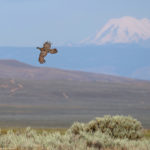Learning To Think Like Water & Photos From SGI’s 7th Annual Workshop
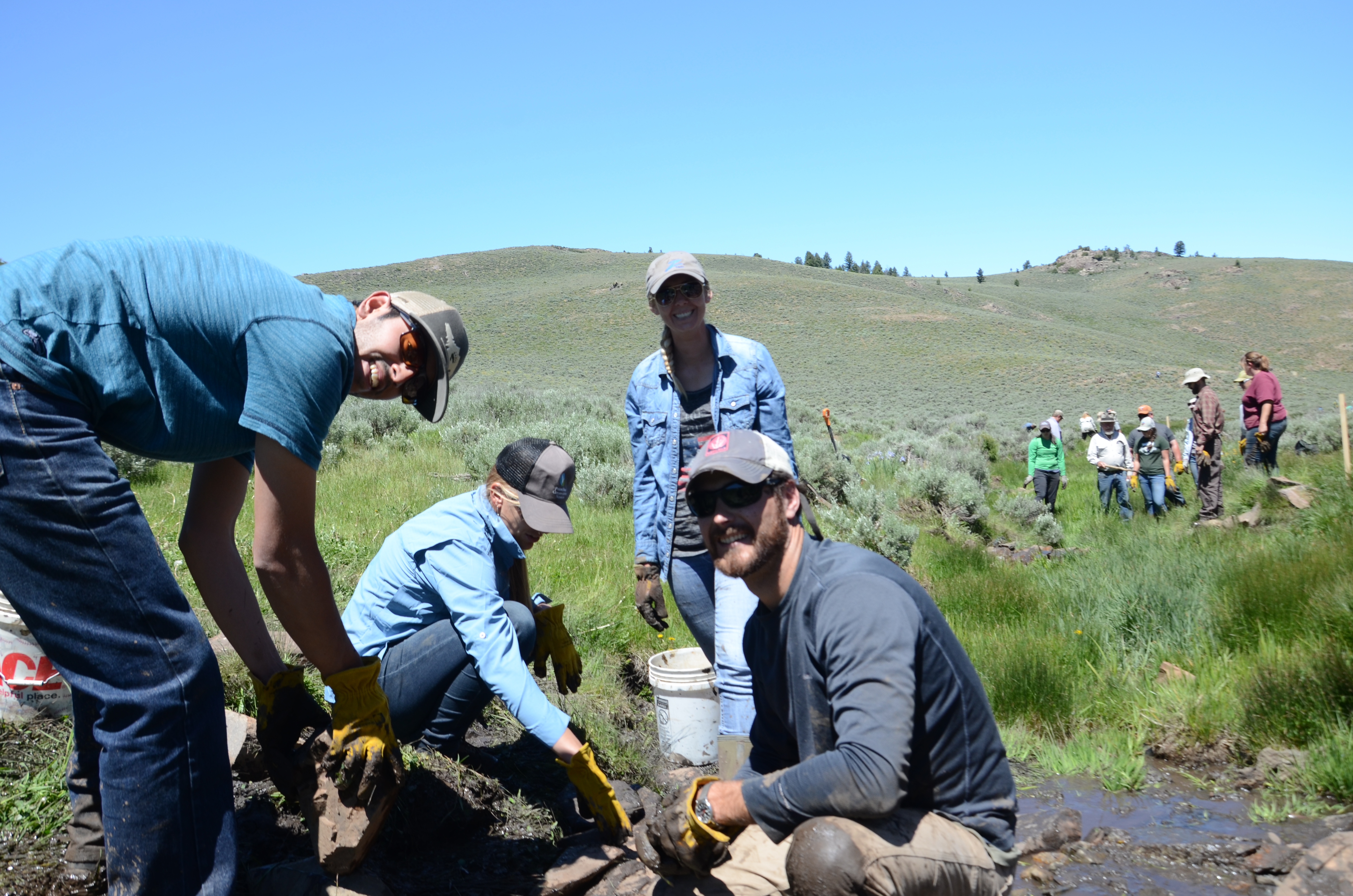
June 21, 2017
Building rock structures that restore wet meadows means lots of mud and heavy lifting, but SGI workshop participants had plenty to smile about as they worked together near Gunnison, Colorado.
Sagebrush conservation partners from around the West met in Colorado to learn from each other
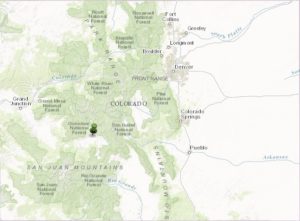 Over 170 partners met in Gunnison, Colorado during the Sage Grouse Initiative’s annual mid-June workshop. We heard from ranchers, county commissioners, local non-profits and public land managers about the amazing results that come from working together to achieve a shared vision: healthy sagebrush rangelands for people and wildlife.
Over 170 partners met in Gunnison, Colorado during the Sage Grouse Initiative’s annual mid-June workshop. We heard from ranchers, county commissioners, local non-profits and public land managers about the amazing results that come from working together to achieve a shared vision: healthy sagebrush rangelands for people and wildlife.
Local landowners and partners discussed what’s working for “the bird and the herd” in Colorado, as well as what’s working to conserve habitat and across the range. In Gunnison, for instance, the working lands conservation results are impressive, due in large part to the basin’s community-based, locally-led cooperative efforts that date back two decades.
The focus for this year’s workshop was water. In keeping with our new emphasis on conserving wet habitats through the SGI Mesic Conservation Strategy, we learned from a variety of experts who are restoring wet meadows. The all-day field tour took workshop participants to several wet habitat restoration sites in the Gunnison Basin, as well as to three private ranches in southwestern Colorado’s beautiful high-elevation sagebrush country.
Workshop participants also learned more about the Gunnison sage-grouse, a species found only in southwestern Colorado and southeastern Utah. These birds occupy 7-10% of their historic range, and were listed as threatened under the Endangered Species Act in 2014.
Thanks in large part to the dedication of ranchers who have conserved intact sagebrush habitat, the largest sub-population of Gunnison sage-grouse is stable.
During the three-day workshop, SGI recognized several conservation leaders who are making a difference for working lands and wildlife. SGI awardees included the local sage grouse working group, and the dozens of partners involved in the Gunnison Wet Meadow Restoration Project.
These quotes from a few of the workshop’s speakers sum up the “can do” attitude of the partners who attended:
- “The ranchers in Gunnison are some of the most durable, hard-working people in the nation,” said John Swartout, Senior Policy Advisor to Colorado Governor Hickenlooper.
- “We’re finding common ground for a common goal: healthy working lands and wildlife in the West,” said Noreen Walsh, regional director of the USFWS.
-
“The SGI science team works hard to assess outcomes of on-the-ground rangeland restoration to help fine-tune delivery and tell the conservation story,” said Dave Naugle, SGI Science Advisor.
- “Sage grouse isn’t an ag or game issue…it’s a community issue,” Jonathan Houck, Gunnison County Commissioner.
-
“What all of you guys have done and achieved here is truly remarkable,” said Thad Heater, SGI coordinator.
Check out the photos below or this video to see what the workshop was all about!

The local Gunnison Sage Grouse Work Group is awarded the highest honor — an SGI Brand — for the group’s impressive collaborative conservation efforts that protect working lands and the rural way of life. Photo: Brianna Randall
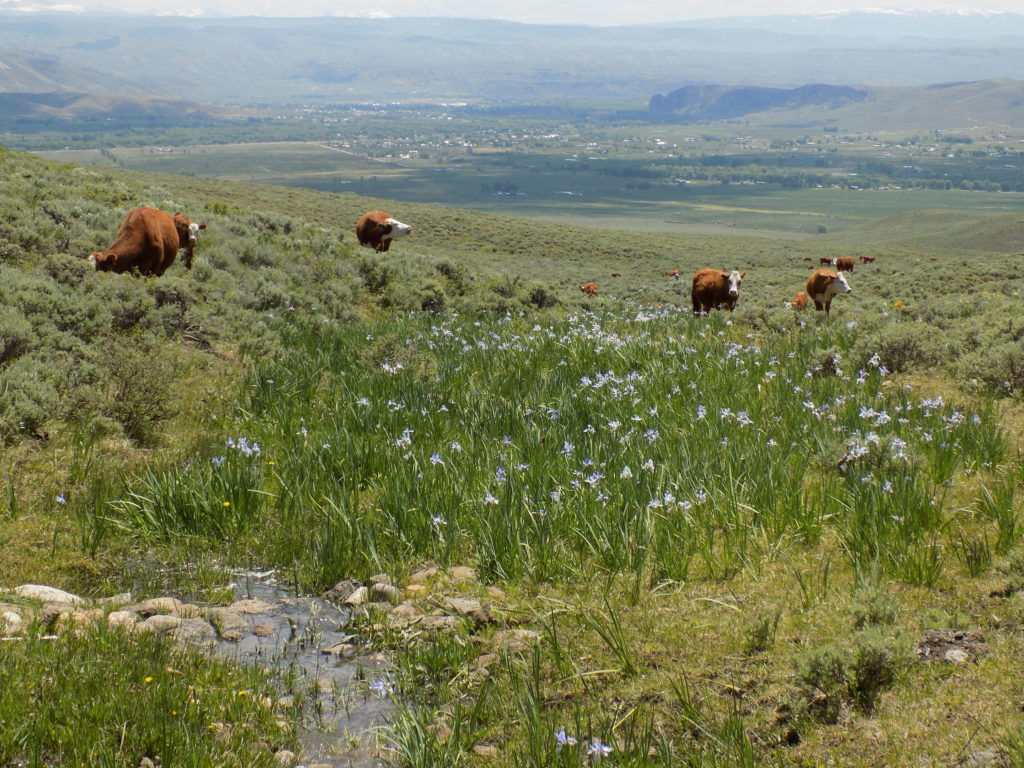
Gunnison sage-grouse are found only in southwestern Colorado and southeastern Utah. The birds’ life cycles and habitat needs are highly compatible with grazing. This photo shows the town of Gunnison behind a restored wet meadow on sagebrush rangeland. Photo: Shawn Conner
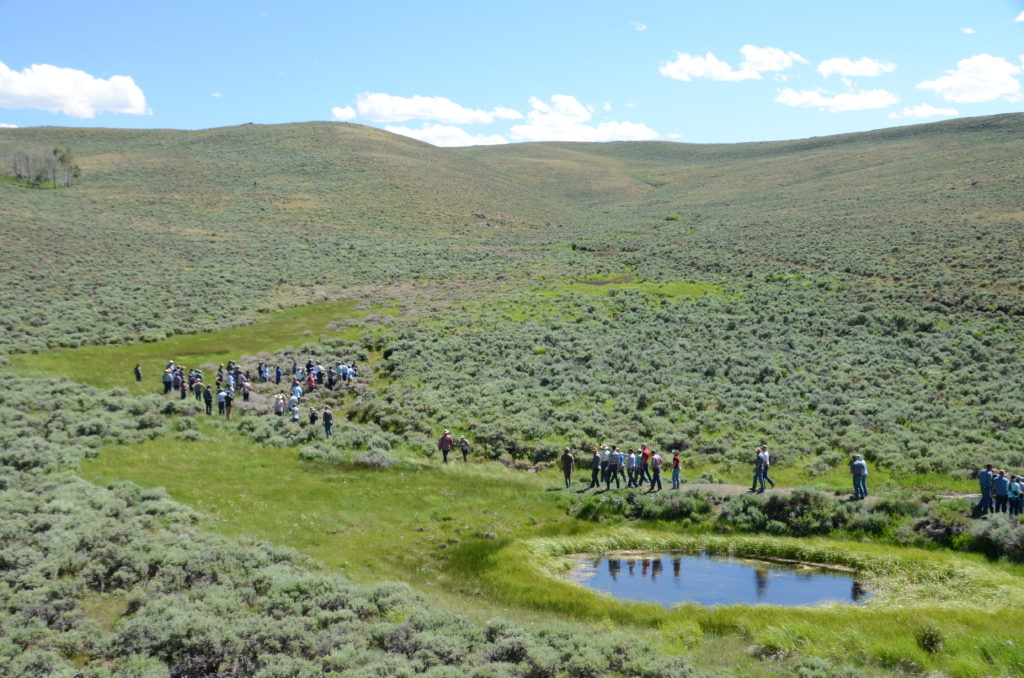
Wet meadows in sagebrush country provide vital forage for livestock, sage grouse, and other wildlife. SGI workshop participants learned how partners in Colorado are working together in an “all lands” approached to restore important water resources in the Gunnison Basin. Photo: Brianna Randall
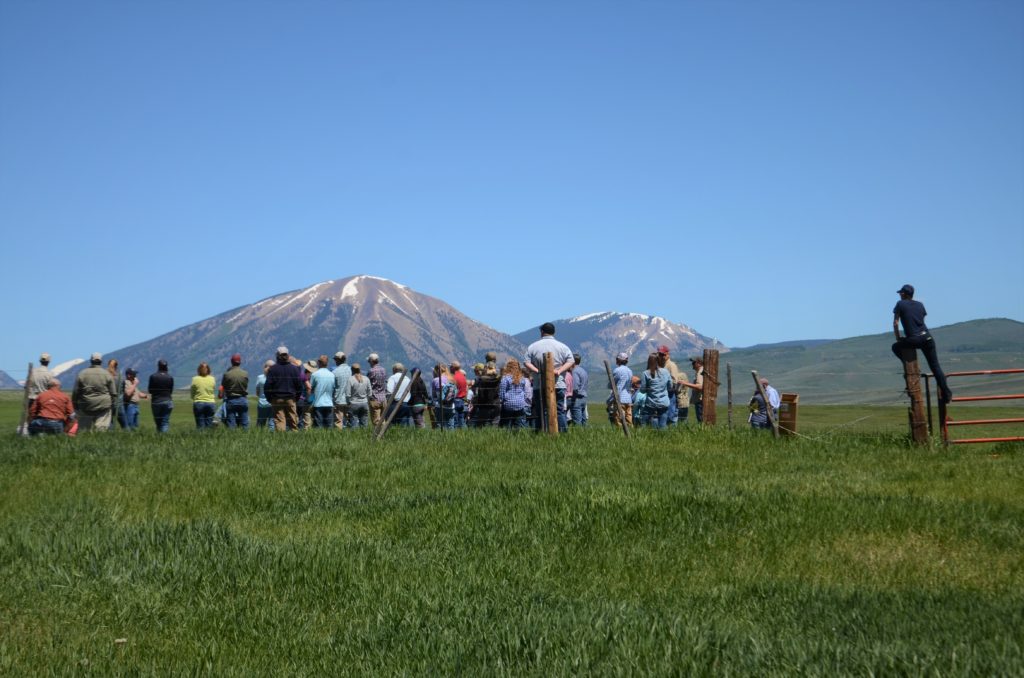
SGI workshop participants listen to local conservation leaders on the Allen Ranch near Gunnison. Many local ranchers are dedicated to stewarding these high-elevation Colorado rangelands to benefit sage grouse and their agricultural operations. Photo: Brianna Randall
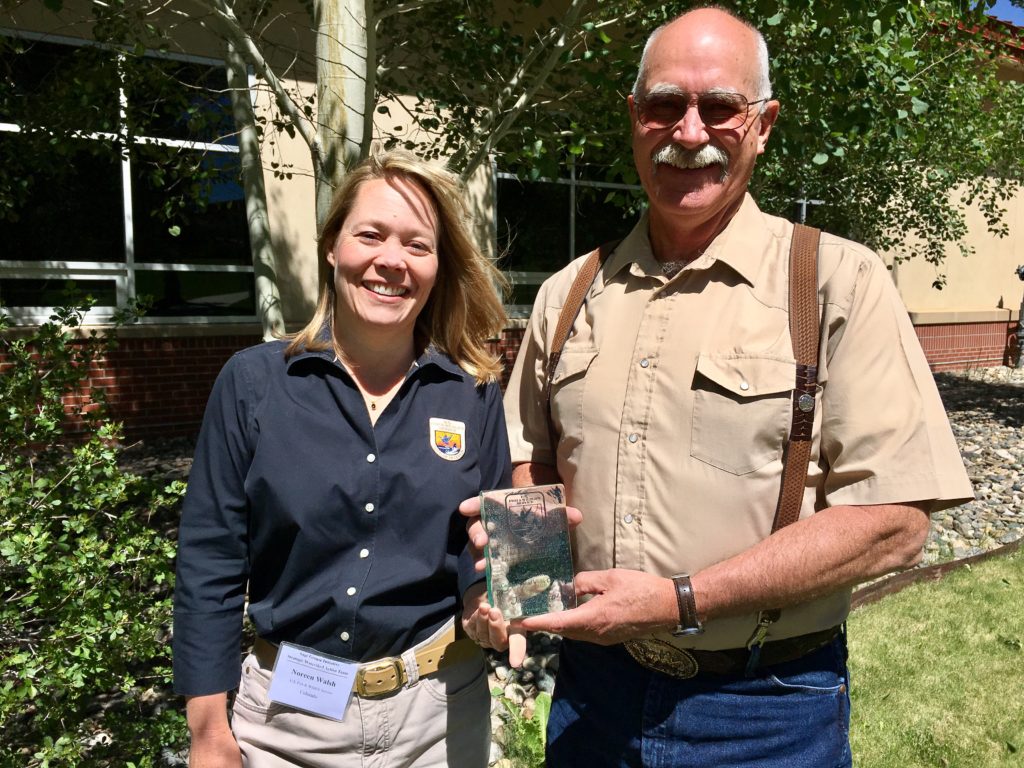
Noreen Walsh, USFWS Mountain Prairie Region Director, presents the “Recovery Champion Award” to Gunnison rancher and biologist Jim Cochran at the SGI workshop. Jim Cochran is a leader in sage grouse conservation efforts. Photo: Brianna Randall
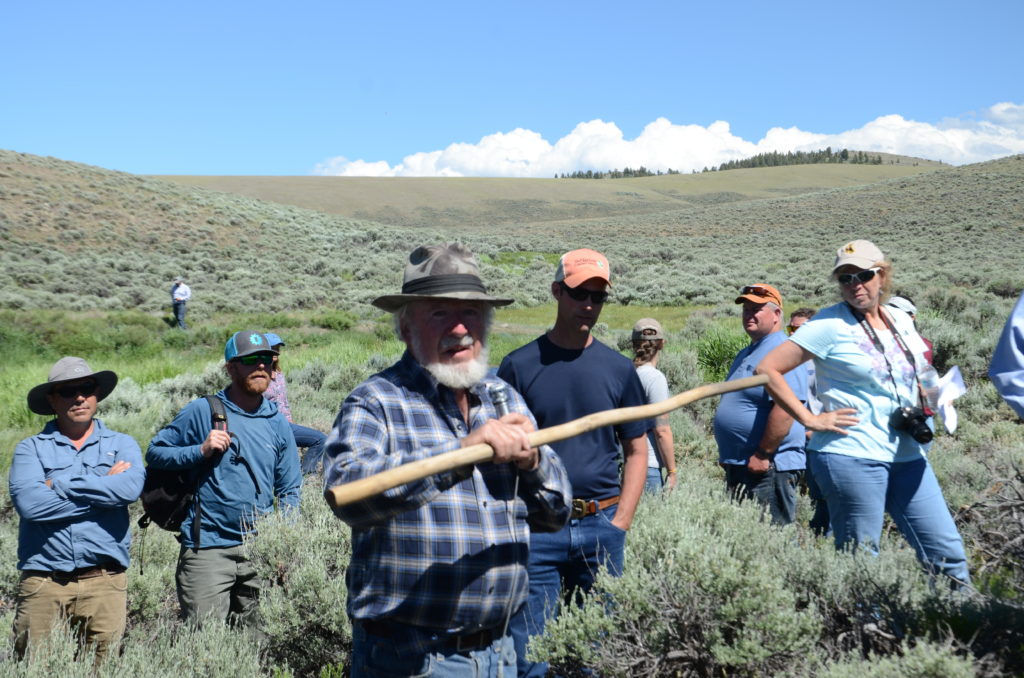
Bill Zeedyk, a wetland restoration expert, tells SGI field staff and partners to “think like water” when reading the landscape. He helped train workshop participants how to plan and design restoration projects that improve natural water storage. Photo: Brianna Randall
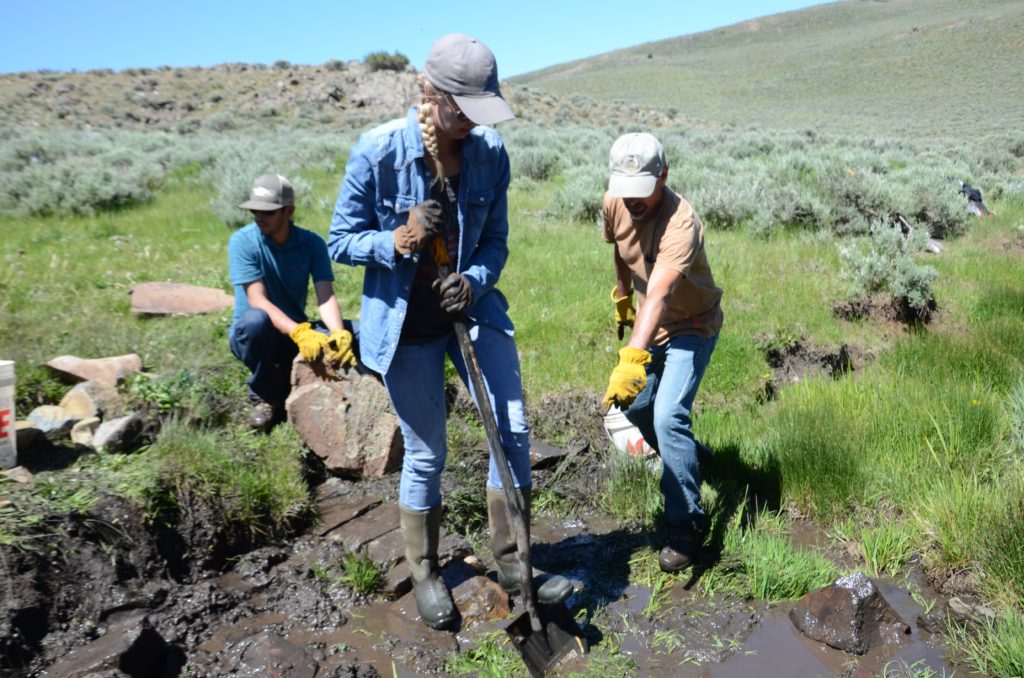
Getting dirty is fun! Volunteers participate in an SGI-sponsored hands-on training day to learn how to install simple rock structures that improve natural water storage and restore wet habitat. Photo: Brianna Randall
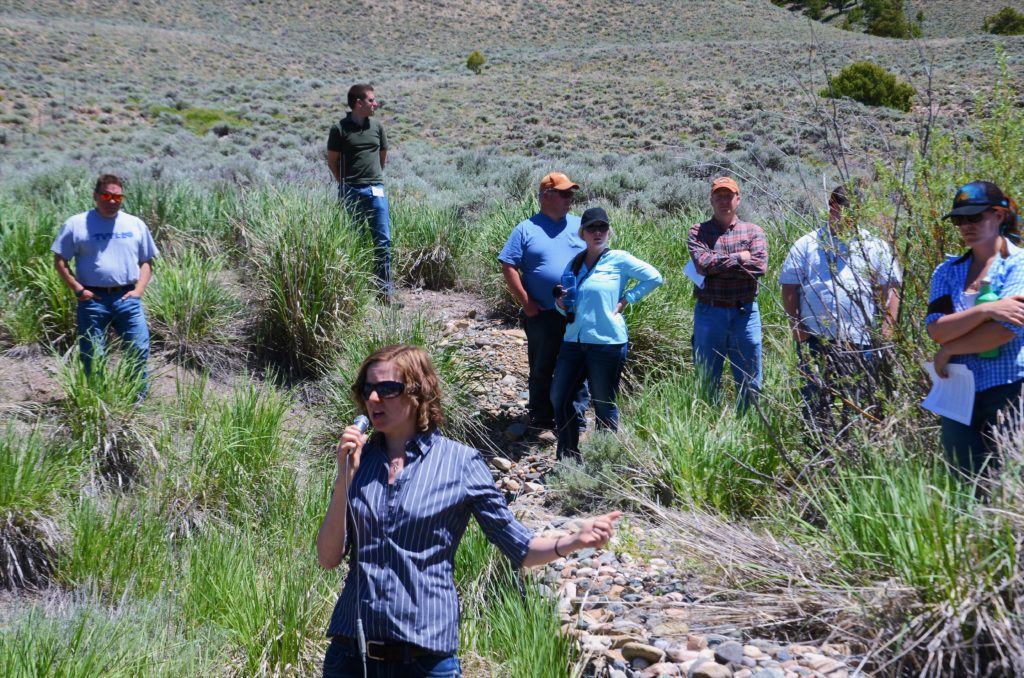
Liz With from the NRCS Gunnison field office describes different types of habitat conservation efforts in the Gunnison Basin to 150 workshop participants during the field tour. Photo: Brianna Randall

During the SGI training day, participants form a chain to help pass rocks as they build a “media luna,” designed by Bill Zeedyk. This rock structure will slow down and spread out water to prevent erosion and improve forage. Photo: Brianna Randall
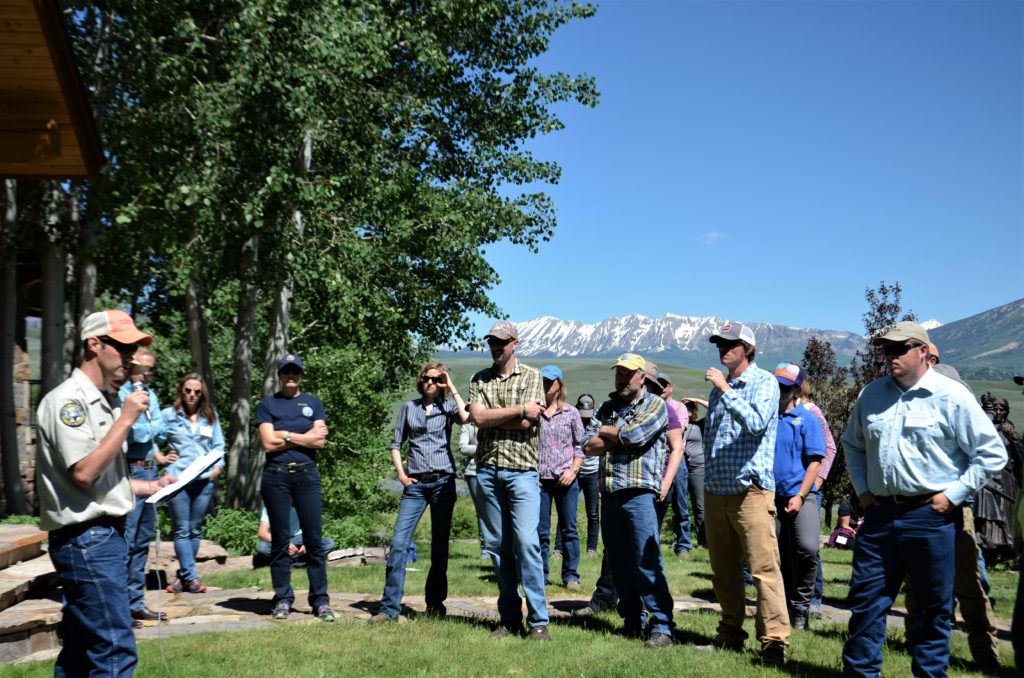
Nate Seward, terrestrial biologist with Colorado Parks and Wildlife, speaks about how grazing is compatible with the life cycle and habitat needs of the threatened Gunnison sage-grouse during the field tour on the Eagle Ridge Ranch. Photo: Brianna Randall
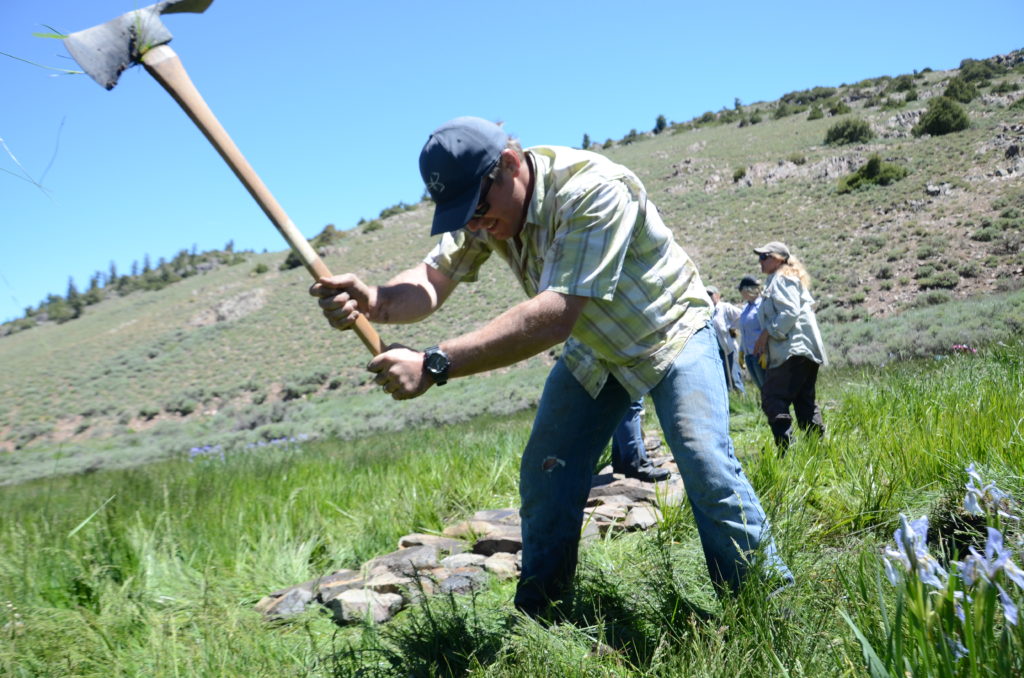
Hard work pays off in no time when building Zeedyk structures like this media luna. Grasses and sedges sprout through the rocks in just one season, improving the landscape for livestock and birds. Photo: Brianna Randall
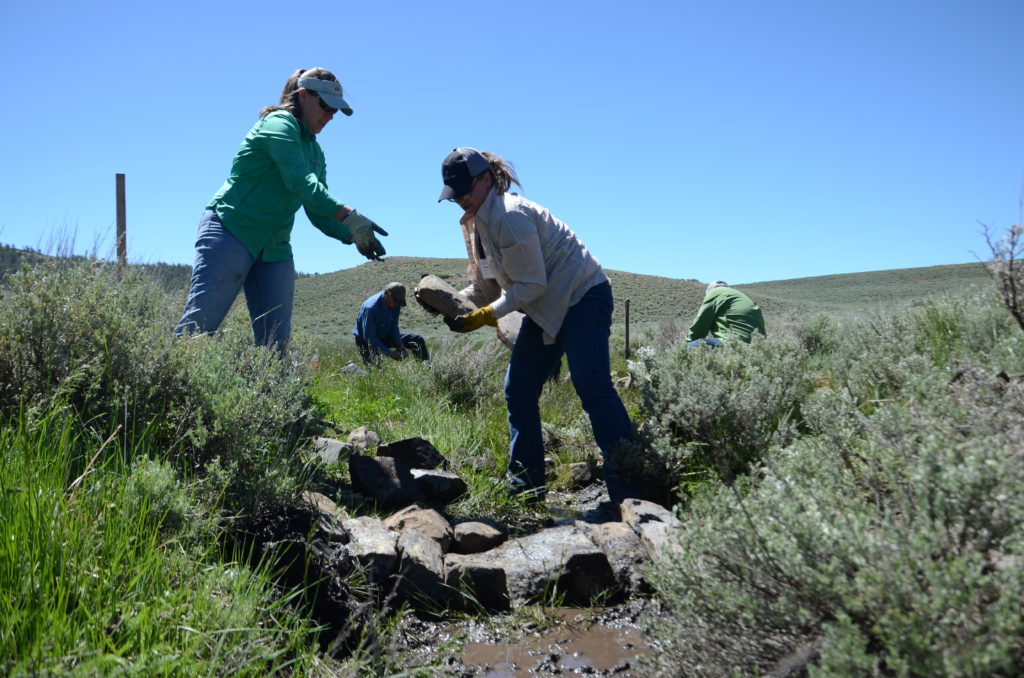
Teamwork is the name of the game when working with rocks. Participants passed plenty of heavy rocks through sagebrush and muck to fix incised gullies and reconnect this stream to the floodplain. Photo: Brianna Randall
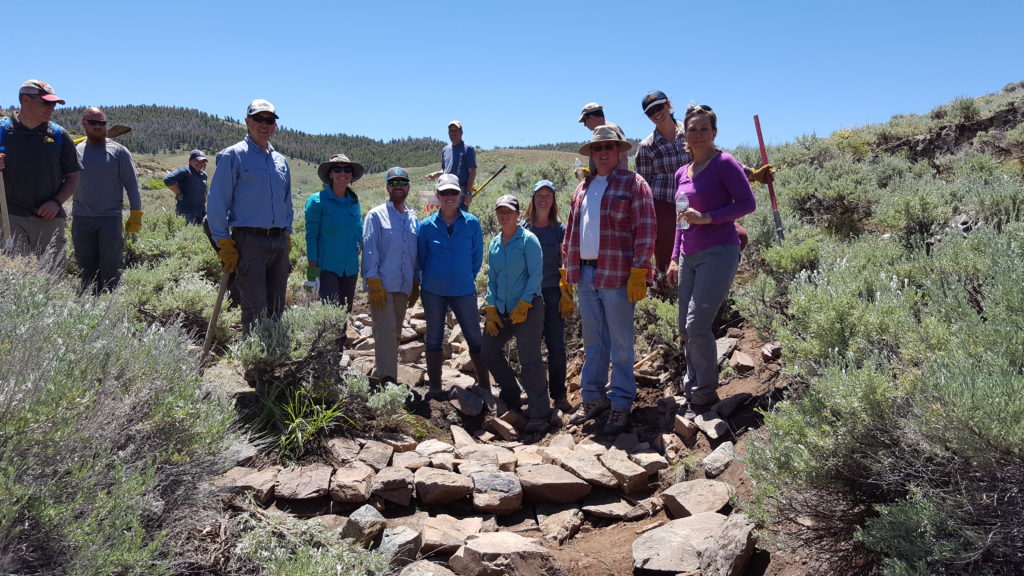
Team members built this one-rock dam on public lands outside of Gunnison during the hands-on wet meadow restoration training workshop. Photo: Tina Dennison
—
The Sage Grouse Initiative is a partnership-based, science-driven effort that uses voluntary incentives to proactively conserve America’s western rangelands, wildlife, and rural way of life. This initiative is part of Working Lands For Wildlife, which is led by USDA’s Natural Resources Conservation Service.
—





